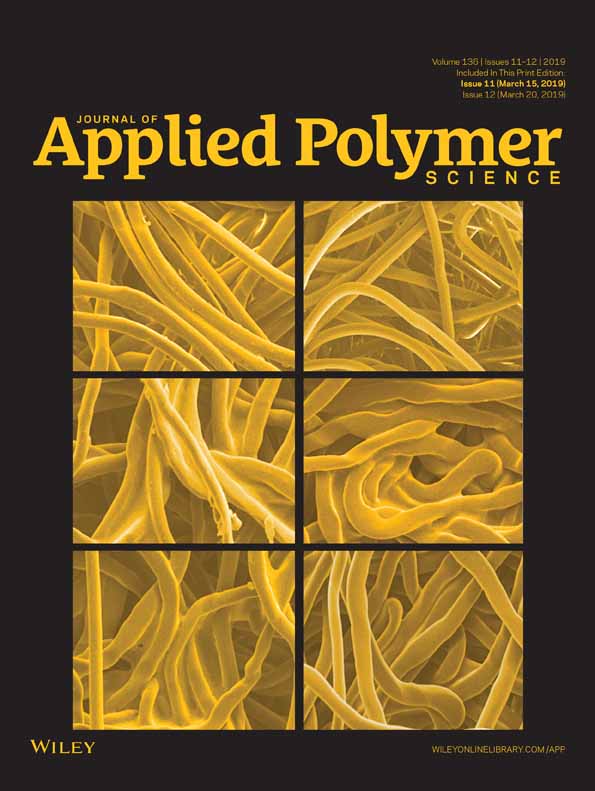Effect of polyhydric alcohols on the mechanical and thermal properties, porosities, and air permeabilities of polyurethane-blended films
ABSTRACT
Polyurethane (PU) and polyhydric alcohols composites were successfully prepared to be used as coating materials for fabrics. The effects of various polyhydric alcohols on the PU composites properties have been investigated. The tensile strengths, glass-transition temperatures, thermal-mechanical properties, and swelling capacities of the PU/polyhydric-alcohol-blended films are described in detail, along with their surface and cross-sectional morphologies. The tensile strengths and glass-transition temperatures of the PU/polyhydric-alcohol-blended films were found to decrease remarkably with increasing polyhydric-alcohol concentration. The swelling capacities and porosities of the PU/poly(propylene glycol) (PPG)-blended and PU/glycerol-blended films were observed to increase with increasing PPG or glycerol concentration. However, the poly(ethylene glycol) (PEG) concentration in the PU/PEG-blended film did not significantly affect its properties. The air and water-vapor permeability of nonwoven nylon fabrics coated with PU/PPG and PU/glycerol increased with increasing PPG or glycerol contents, while those coated with PU/PEG were unaffected by PEG content. © 2018 Wiley Periodicals, Inc. J. Appl. Polym. Sci. 2019, 136, 47429.




